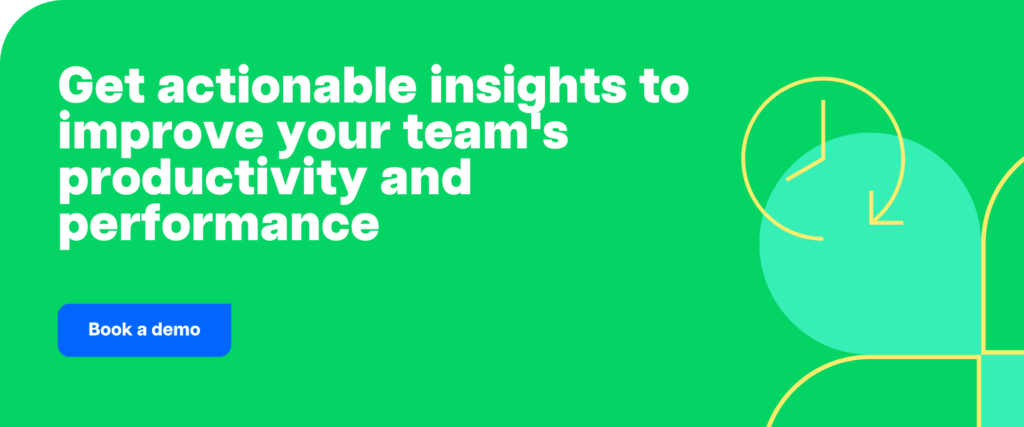Finding and keeping good employees is harder than ever in today’s fast-paced job market. In addition to slowing down processes, a high turnover rate costs a lot of money in training and hiring new people. This piece talks about how to make strong policies for keeping employees that benefit the company, make workers happier at work, and help the company reach its goals.
Table of Contents
- What is employee retention?
- Factors influencing employee retention
- Core elements of an effective retention policy
- Designing your employee retention policy
- Implementing the employee retention policy
- Employee retention policy monitoring and evaluation
What is employee retention?
The ability of a company to prevent its employees from leaving is known as employee retention. Companies that understand retention techniques acquire a distinct competitive advantage as industry competition heats up. Statistics highlight the financial impact of employee turnover by showing that it might cost up to twice an employee’s yearly compensation to replace them.
Factors influencing employee retention
A combination of internal and external factors affect employee retention. Strong corporate culture and a healthy work environment are essential from the inside out. Economic developments and the larger job market are important external factors. Furthermore, due to generational differences, Gen Z and millennials have distinct expectations about things like digital integration and more freedom in the workplace.

Core elements of an effective retention policy
Companies need effective retention policies to provide a friendly atmosphere that keeps employees. These rules have several fundamental features that meet employee requirements and goals. Each of these basic elements is examined in detail:
1. Compensation and benefits
Compensation typically determines whether an individual joins or leaves a company. Organizations should meet or surpass industry compensation norms to stay competitive. This includes pay and extensive benefits that meet employees’ different demands. These advantages may include
- Health insurance: Offering high-quality medical, dental, and vision coverage.
- Retirement plans: Providing robust 401(k) plans or other retirement savings options with employer matching contributions.
- Life and disability insurance: Ensuring financial protection for employees and their families in cases of unforeseen events.
- Performance bonuses: Rewarding employees financially for meeting or exceeding targets.
- Wellness programs: Supporting overall employee health with programs that might include gym memberships, mental health days, and stress management workshops.
2. Work-life balance initiatives
Work-life balance is crucial for employee satisfaction and retention. Employers can support this by:
- Flexible work arrangements: Allowing flexible hours, remote work options, or compressed workweeks.
- Paid time off (PTO): Encouraging employees to take vacations and personal days to recharge, without penalty or complication.
- Parental leave: Offering equitable maternity and paternity leave policies that support new parents.
- Support for childcare: Providing childcare assistance or subsidies can be a significant relief for working parents.
- Employee assistance programs (EAPs): Offering services that help employees manage personal issues that might affect their work performance or satisfaction.
3. Career development opportunities
Career development is a key driver of employee retention because it demonstrates an investment in employees’ professional growth. Effective strategies include:
- Training and education: Offering tuition assistance, onsite training, and access to courses and seminars.
- Mentorship programs: Connecting less experienced employees with mentors who can provide guidance, advice, and support.
- Career pathing: Clearly defining a path for progression within the company, which helps employees envision their future with the organization.
- Leadership development: Preparing high-potential employees for future leadership roles through targeted development programs.
4. Recognition and reward systems
A culture of recognition and reward not only boosts morale but also reinforces the behaviors that an organization values most. Recognition programs can vary widely but often include:
- Employee of the month/year awards: Recognizing individuals who exemplify company values or have surpassed performance goals.
- Spot awards: Offering immediate recognition and rewards for exceptional work or effort noted on the spot.
- Service awards: Acknowledging milestones in an employee’s career with the company, such as work anniversaries.
- Peer-to-peer recognition programs: Allowing employees to recognize their peers for hard work and contribution, which can enhance team morale.
These aspects are crucial to a good employee retention policy. Compensation and benefits, work-life balance, professional growth, and recognition may build an engaging and supportive workplace that fosters employee loyalty.

Designing your employee retention policy
Maintaining a motivated and engaged workforce requires a good employee retention program. Such a policy involves strategic planning, stakeholder input, and data-driven insights. How to build an efficient employee retention policy is outlined here:
Steps to develop a tailored retention policy
Step 1: Assess current policies and workforce needs
Check your retention initiatives to see if they meet your employees’ needs. Examine turnover rates, employee satisfaction surveys, and performance measures to find improvement opportunities.
Step 2: Define objectives
Clearly articulate what you aim to achieve with your retention policy. Objectives might include reducing turnover by a specific percentage, improving employee engagement scores, or addressing known pain points like career progression or work-life balance.
Step 3: Segment your workforce
Recognize that different groups within your workforce may have different needs and motivations. Segment your employees based on factors like job role, department, seniority, and demographics to tailor your strategies accordingly.
Step 4: Develop strategies for each core element
Create remuneration and benefits, work-life balance, career development, and recognition strategies based on your goals and employee segments. Ensure these methods meet employee requirements and expectations.
Step 5: Create an implementation plan
Outline how you will roll out the retention policy, including timelines, responsible parties, and required resources. Ensure there is a clear process for communicating the changes to all employees.
Involving stakeholders in the planning process
Identify key stakeholders
This group might include senior leadership, human resources, department heads, and even employee representatives. Each has unique insights and a stake in the policy’s success.
Engage through workshops or meetings
Organize sessions where stakeholders can discuss current issues, propose solutions, and provide feedback on proposed retention strategies. This collaborative approach helps build consensus and commitment to the policy.
Continuous communication
Keep stakeholders informed throughout the policy development process. Regular updates and opportunities for feedback help maintain engagement and allow for adjustments based on new insights or challenges.
Using data to inform policy decisions
Employee surveys
Complete full employment satisfaction and engagement surveys. Use these to collect quantitative and qualitative employee feedback on work environment, remuneration, development, and more.
Exit interviews
Analyze exit interview data to understand why employees leave. Look for patterns or recurring themes that could indicate systemic issues that need addressing in your retention strategies.
Performance metrics
Performance management data can reveal employee success, satisfaction, and retention trends. Job performance, target achievement, and internal promotion rates can indicate existing practices’ efficacy.
Benchmarking
Compare your pay, benefits, and other employment terms to industry standards. This might help you compare your firm to competitors and identify areas for improvement to make it more appealing to employers.
Carefully creating a retention policy, consulting stakeholders, and using data to make decisions can improve employee satisfaction and reduce turnover. This proactive technique promotes a healthy workplace and corporate goals for long-term success.
Implementing the employee retention policy
Effective employee retention policy implementation is as vital as strategy and design. Effective policy implementation ensures organization-wide adoption and uniformity. Tips for executing these techniques, including communication and manager/leader training:
Best practices for effective implementation
Pilot programs
Try out important retention policy aspects in limited departments or teams before a full launch. You can get feedback and alter the policy to reduce risks and improve its efficacy.
Set clear milestones and timelines
Develop a clear timeline for each stage of the implementation process. Set realistic milestones and deadlines to ensure that the implementation is on track and manageable.
Allocate resources appropriately
Ensure that there are adequate resources—be it financial, human, or technological—to support the implementation of the policy. This may include budget for new tools, additional staff to manage programs, or resources for reward systems.
Monitor progress and adjust as needed:
Regularly review the progress of the implementation against the set goals and timelines. Be prepared to make adjustments based on what is or isn’t working, which may require going back to the drawing board or tweaking certain elements.
Communication strategies to ensure transparency and buy-in
Communicate the ‘Why’ and ‘What’
Clearly explain why the retention policy is being implemented and what it entails. Employees need to understand how these changes will benefit them and the organization. This builds trust and alignment with the organization’s goals.
Utilize multiple communication channels
Reach out to employees through various channels like email, intranet, meetings, and informal chats. This ensures that the message reaches everyone and accommodates different communication preferences.
Encourage feedback
Provide platforms for employees to voice their concerns and suggestions about the new policies. This could be through surveys, suggestion boxes, or town hall meetings. Actively listen to the feedback and demonstrate how it is being used to refine the policies.
Regular updates
Keep everyone informed about the progress of the implementation and any changes being made. Regular updates can help maintain enthusiasm and commitment to the new policies.
Training for managers and leaders
Leadership engagement
Train leaders and managers on the importance of the retention policy and their critical role in its successful implementation. Leaders should be able to articulate the benefits of the policy and motivate their teams to support the initiative.
Skill development
Equip managers with the skills necessary to support their teams through the change. This includes training on emotional intelligence, communication, conflict resolution, and motivational techniques.
Role-specific training
Provide targeted training that addresses specific roles within the organization. For example, HR professionals might need training on administering new benefits programs, while team leaders might need guidance on flexible scheduling practices and recognition programs.
Continuous learning
Offer ongoing training and professional development opportunities to keep leaders informed about the latest trends in employee retention and management practices. This ensures that your leadership remains effective and adaptive to new challenges.
An effective staff retention program needs careful preparation, clear communication, and committed leadership. These best practices help firms streamline transitions, boost engagement, and retain important personnel.
Employee retention policy monitoring and evaluation
To understand and maintain your staff retention policy, monitor and assess it. Clear measurements, policy revisions, and feedback mechanisms can strengthen talent retention strategies. Effective retention monitoring and evaluation:
Metrics for retention success
- Measure turnover overall and voluntary turnover regularly. These measures can be used to evaluate retention methods over time.
- Survey employees annually or biannually to assess their satisfaction and engagement with their work, work environment, and opportunities within the organization. See how new policies affect these scores.
- Analyze retention rates by department or team to pinpoint areas of success or failure in retention initiatives.
- Calculate the cost of replacing departing employees by recruiting, employing, and training replacements. Cost reductions may imply retention success.
- Track performance metrics before and after implementing new retention strategies to assess increases in productivity, quality of work, and other indicators.
- Track staff advancement and internal mobility rates to compare with external opportunities. Effective retention may be linked to high internal mobility.
Regular review and updates of the policy
- Schedule regular reviews of the retention policy, at least yearly, perhaps more frequently if the organization is experiencing fast change. This keeps the policy in line with company goals and employee needs.
- Update the retention policy to reflect substantial changes in the business environment, such as new plans, market conditions, or worker demographics.
- Establish a Policy Revision Committee with HR and stakeholder members to manage the review and update process. This group can review data, make changes, and keep the policy current.
Continuous improvement feedback mechanisms
- Send out retention and workplace satisfaction surveys regularly. Keep feedback anonymous to encourage honesty and constructiveness.
- Conduct thorough exit interviews with departing employees to understand reasons for leaving and identify areas for improvement.
- Conduct focus groups with employees from various departments to evaluate the retention policy and identify its strengths and faults.
- Establish an open-door policy and offer a virtual or physical box for employee ideas to improve the workplace environment and retention methods.
- Regularly engage managers to gather feedback on policy implementation and issues faced by their teams.
Data, policy changes, and employee feedback can help companies retain employees. This proactive approach lets the policy adapt to changing employee needs and business goals, making employees happier and more dedicated.
Conclusion
Creating a successful employee retention policy is crucial in today’s changing workforce. High turnover disrupts operations and costs a lot in recruitment and training, therefore retention tactics are crucial for any company. Understanding what motivates employees—from pay and perks to work-life balance and professional development—helps companies foster long-term loyalty.
These policies are effective and adaptive because stakeholders and data-driven insights were used to build and implement them. A well-executed employee retention policy shows a company’s dedication to its employees, improving job satisfaction and corporate loyalty. This paper outlines how to build such rules to ensure a resilient and satisfied workforce that drives the firm ahead.

Carlo Borja is the Content Marketing Manager of Time Doctor, a workforce analytics software for distributed teams. He is a remote work advocate, a father and a coffee junkie.


